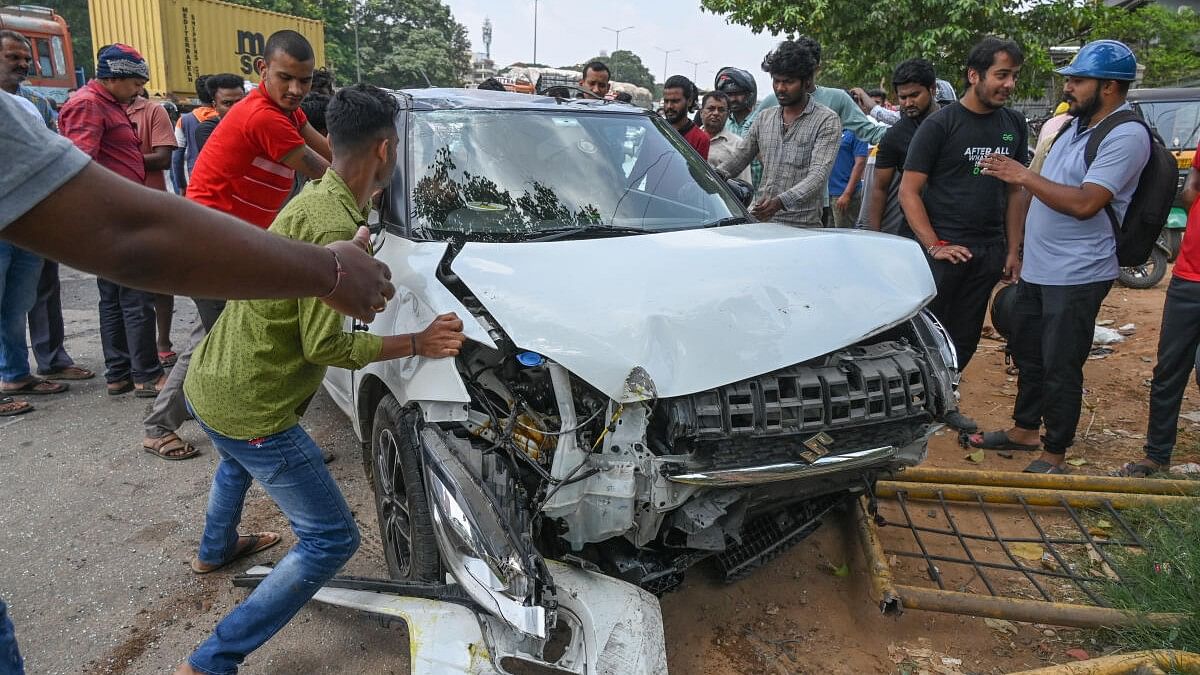
A total of 823 people lost their lives in 794 accidents in 2023.
Credit: DH File Photo
Bengaluru: An average of 75 people were killed on Bengaluru roads every month this year, making it the deadliest in 13 years.
According to data from the Bengaluru Traffic Police a total of 823 people lost their lives in 794 accidents in 2023 (until November), the most due to road crashes in a single year since 2011.
Previously, 2016 saw the highest figures at 754 fatal road crashes and 793 victims. The numbers for 2023 are markedly higher than 2011’s 727 fatal crashes that killed 757 people.
Overall, however, the city recorded 4,499 road crashes until November this year, a marked fall from 7,506 crashes in 2016, the highest figure recorded in 13 years.
The decline in overall numbers does not provide much of a relief as the rising fatality rate indicates that more and more road crashes are proving deadly. Over 17 per cent of all road crashes in 2023 were fatal while only a little over 10 per cent of all road crashes in 2016 were fatal.
Areas lying outside of the central business district (CBD) saw the most fatal crashes, with Yelahanka traffic police station limits recording 54 fatal crashes with 59 victims, followed by Kengeri with 50 crashes and 51 victims and Devanahalli with 49 crashes and 51 victims.
In the CBD, these figures are usually in single digits or do not exceed 20 due to high vehicle density on all roads, say traffic police. The higher number of accidents on the outskirts is due to the lower vehicular density compared to CBD roads, they added.
“The city is expanding so more accidents occur in these extension areas where the vehicle density is low and vehicle speeds are much higher. Road safety measures are also lacking on roads in many of these areas,” M N Anucheth, Joint Commissioner of Police (Traffic), told DH.
Police are identifying and rectifying blackspots on these roads besides introducing measures such as zebra crossing and high-rise pedestrian crossings to reduce pedestrian fatalities, he added.
Anucheth cautioned that the rising numbers cannot be seen in isolation without considering the increase in the overall citizen and vehicle population. He noted that the per capita trend of fatalities vs the growing population has been falling while the ratio of the population to the number of vehicles has gone up.
In 2011, there were 50.33 lakh vehicles on the roads in the city for a population of roughly 84.4 lakh.
This rose to nearly 110 lakh vehicles for an estimated population of 130 lakh in 2023 (until Nov).
Anucheth also pointed at traffic violations such as lacking seat belts and quality helmet usage that lead to higher fatalities.
“Without the use of good quality helmets, even a crash at 50 km could prove fatal,” he said. He added that reduced police presence on the roads could have also led to lower deterrence among road users, possibly encouraging them to speed.
Chetan Sodaye, from the nonprofit WRI India, explained that the rising fatality rate suggested the need for a closer examination and a speed management plan.
He noted that the city’s streets were currently not designed for any particular speed.
He emphasised better and consistent collaboration among the city’s agencies, local communities and experts such as urban designers, transportation planners and traffic engineers to implement targeted measures such as improved urban street design. Such interventions could make streets safer for all but especially for vulnerable road users such as pedestrians, cyclists and two-wheeler riders, and reduce overall fatal road crashes.